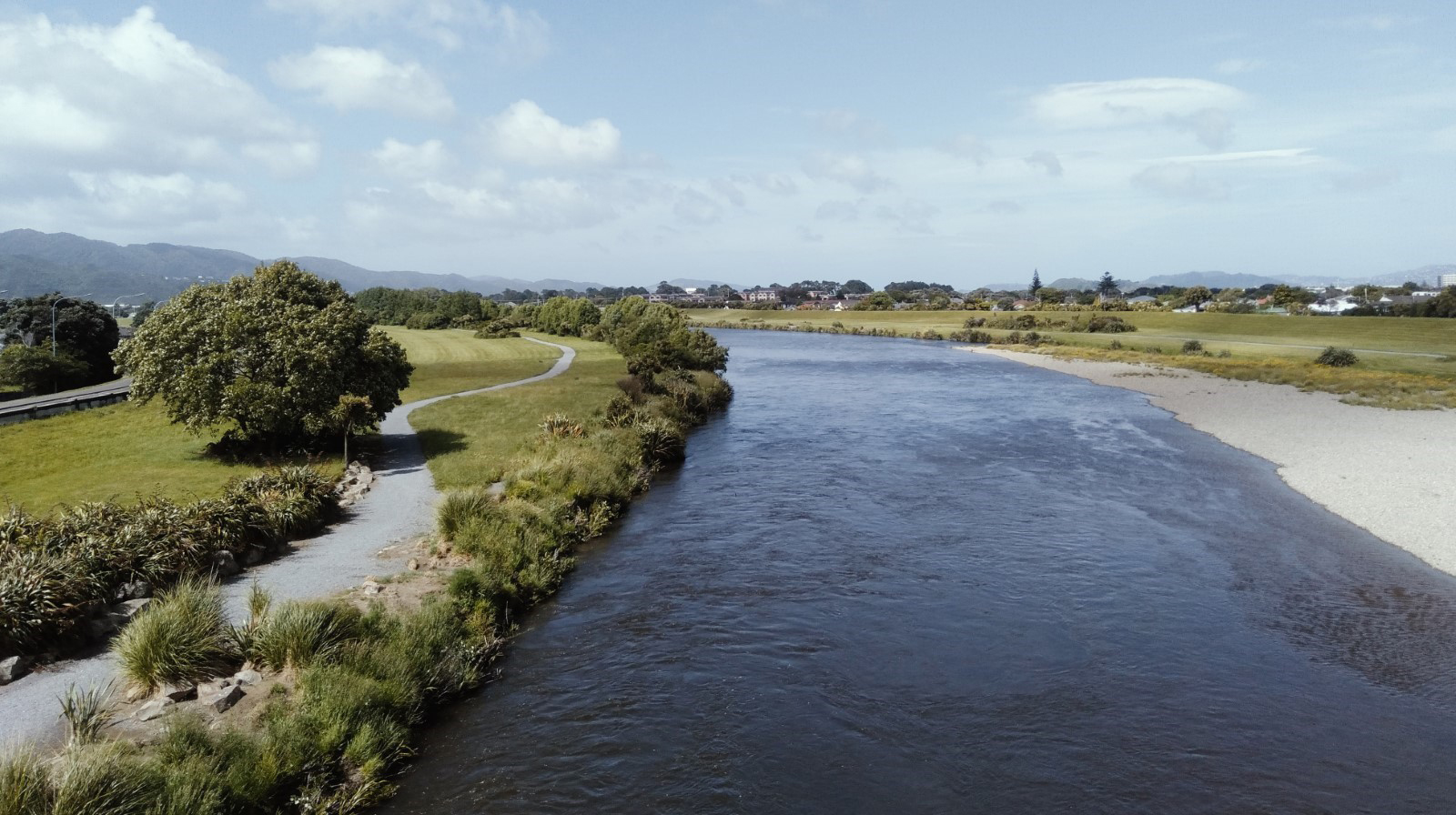As climate change increases the frequency of severe weather events, what can be done about public housing on the most densely populated flood plain in the country?
That’s the question architects Mitra Homolja and Ellie Tuckey want to explore with the $20,000 fellowship they received last week from the family of former Government Architect F Gordon Wilson and Te Kahui Whaihanga New Zealand Institute of Architects.
It’s a prize thought up to spark architectural research into Aotearoa’s unmet housing needs.
And for the Wellington pair, there’s perhaps nowhere more pertinent for this than Te Awa Kairangi ki Tai Lower Hutt.
It’s a city with a history of flooding, and the projected effects of climate change have experts expecting this legacy to continue.
Homolja and Tuckey will research circular economy construction technology and how it can be used to make existing public housing, tenants and the local environment more resilient.
That means looking at whether houses currently use reusable materials, or if managed retreat accordingly means filling up the country’s landfills.
Homolja said building more resilient housing is a pressing reality for many communities around the country.
※Whilst central and local governments and communities undertake rigorous discussion about climate adaptation and methods, public housing demand continues to outweigh supply, and public housing continues to be renovated and newly built in areas at risk of severe climate events,§ she said.
It’s been a big year for recognition of the inevitability of climate change-spurred weather events, with the Auckland Anniversary floods and Cyclone Gabrielle causing immense damage to parts of the North Island.
But this time around, significant populations in flood-prone areas were left untouched. Areas like Lower Hutt and South Dunedin are densely populated and already grappling with the uncomfortable prophecy of increased flood events.
Former wetlands and coastal flats have often played host to working class communities in New Zealand, and as development has marched on, porous ground has been paved over, giving stormwater no choice but to spill out through communities.
Hutt City Council has earmarked $62.8 million over the next 10 years for stormwater upgrades and improvements, while modelling of flood hazards continues.
At the same time, Kainga Ora has a busy programme of new public housing in the Lower Hutt area - there are 3500 public houses in Lower Hutt, with 140 just finished, and 400 in preliminary plans for the next few years.
That’s to meet a steadily growing need in the area. Kainga Ora reported 360 Lower Hutt families in need of public housing in 2018 but in June the number was 576.

And those are often the same people most impacted by events like this year’s late summer flooding. Reports have found that in Auckland it’s the poorest communities who will be hit hardest.
Homolja said the research hopes to address this inequity.
※The particular reason why this fellowship was interesting was because it is through that lens of public housing, and people who rely on public housing can quite often already be in vulnerable spaces in their life,§ she said. ※Climate can exacerbate those vulnerabilities even more, so there’s all of these different layers coming through in that research we would like to address.§
Social justice
The weather events showed the entwinement of social and climate issues, Tuckey said.
※It’s inherently entwined with social justice# in terms of the Auckland floods it was pretty clear to see that people from lower socioeconomic backgrounds weren’t able to adapt as quickly as people from higher socioeconomic backgrounds,§ she said. ※So I think exploring how our physical homes and neighbourhoods can be more resilient will long term impact how people are socially resilient and socially strong.§
Employing circular economy approaches to construction could involve not using glue or nails that doom demolished buildings to the landfill, essentially creating homes that can be dissembled and reassembled elsewhere.
That’s the plan in Fiji, where entire villages are being earmarked for unprecedented translocation inland in a complicated operation.
Many of our Pacific neighbours are facing climate challenges, and Tuckey and Homolja said they wanted New Zealand to learn from them.
※There’s also international research and some case studies in places like Tuvalu and Kiribati - places that are facing the same problems, or even more severe, than New Zealand,§ Tuckey said.?
The research will explore how matauranga Maori can be used to bolster the climate response as it relates to building.
※Maori have been kaitiaki of this place for a long, long time and we should all be collectively looking for guidance from that knowledge base, because so far, from our perspective, the Western worldview isn’t helping us to respond to climate challenges in the long term,§ she said. ※Councils are building sea walls knowing that they will have to be replaced in a short period of time.§
Judith Taylor, jury chair and president of the architects institute, said the adaptability of public housing was a topic that hadn’t been explored properly yet.
※Public housing encompasses complex issues and diverse themes, providing a rich opportunity to explore wide-ranging ideas,§ she said. ※The 29 submissions we received interrogated urban systems and public housing in Aotearoa, and considered the future with innovative approaches, resilient solutions and awareness of built and natural environments.§


